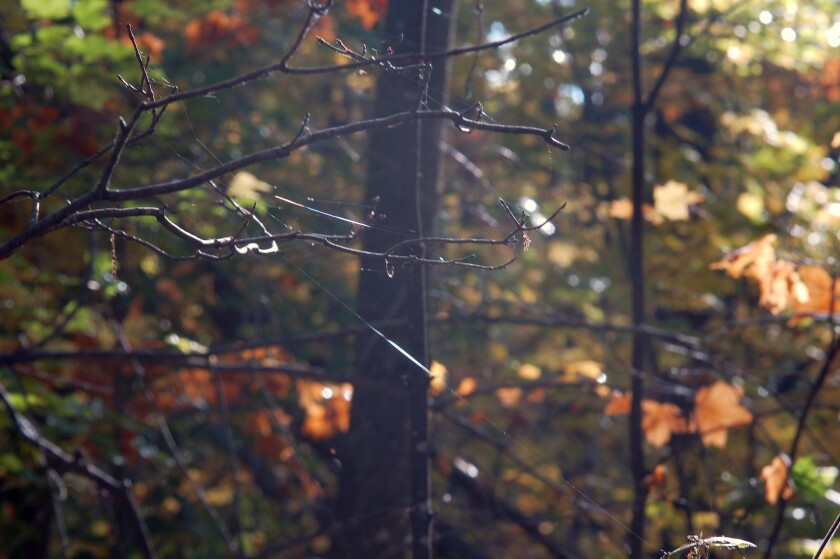Late October is a time of change. Days may vary in sunlight, clouds, rain or even snow. With the sun rising at 7:45 a.m. and setting at 6 p.m., the daylight is shorter and the sun is lower. Temperatures can still be mild, but likely we’ll see freezing as well.
The wetlands respond. Chilly mornings often hold coatings of ice, first on small and shallow bodies of water, then spreading to the larger ones later.
The big leaf drop is mostly complete, including the tamaracks, our only conifer to shed all its needles at one time in the fall. Just a few — sliver maples, various willows (including weeping willows) and buckthorns — appear to be reluctant to drop leaves and may last into November.
Looking around, we see the bare trees with their leaves littering the forest floor. If there is no snow cover at this time, the open woods of “AutWin” allow us to see plants that are still green and usually not visible before: mosses, lycopodiums, ferns and lichens. Also seen now are the abundant red fruits and berries of highbush cranberries, crabapples, mountain ashes, hawthorns and rose hips.
The migration continues and as this month wanes, we get reintroduced to winter finches and raptors that were here last year. Some remain and some keep on going further south. And with these migrants are the permanent residents that never leave us: chickadees, nuthatches, crows, ravens and woodpeckers. Chipmunks, so active in the yard a couple weeks ago, are going to their den. Their arboreal cousins continue to collect their meals for their caches.
It might seem too late for insects, but a few butterflies — tortoiseshells, mourning cloaks and commas (anglewings) — may still be seen as they seek hibernation sites. At dusk, we might note the gathering of late-season moths as they come to our windows. A few hardy craneflies keep flying now if conditions are right. And we might note the arrival of ladybugs looking for shelter. This is also a time when we may see an interesting phase of the spider life cycle.
Spiders overwinter in a variety of ways: adults, subadults, babies (spiderlings) or eggs. Those that hatch in late summer need to find shelter for the coming cold. These tiny spiderlings, usually less than a quarter-inch long, use a method of travel to search for such sites. When the temperature is right, they climb up on a twig, a blade of grass or other available substrate.

Contributed / Larry Weber
Here, they raise their abdomen and pull out threads from the rear-end spinnerets. These filaments drift in the autumn breeze and carry them off. Usually, the distance they go in this aerial travel is not far, but they can go a long way. This movement has been compared to us flying a kite (or a balloon) and letting the breeze carry the kite and us away.
Commonly called “ballooning,” I prefer to call this mode of “travel kiting.” We seldom see the small spiders hanging onto threads for the ride, but we do detect the threads that carried them for a while. These travel threads are often present as we look toward, below, the sun (never look at the sun).
With the leaves gone from trees, a clear afternoon is a wonderful time to see the plethora of threads that tell of wandering spiderlings. And in morning dew, the threads can be seen as well. Often, it is hard to believe how abundant they are at this time. We might not see them, but they leave threads that tell of their travels in “AutWin” before the snows come.

Retired teacher Larry Weber, a Barnum resident, is the author of several books.
